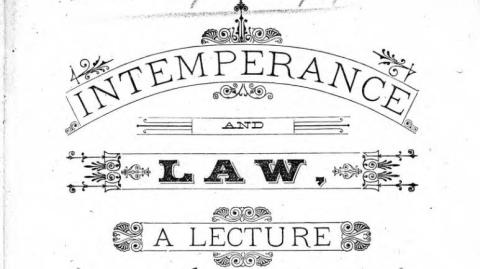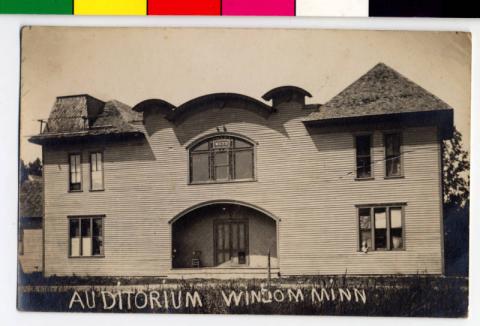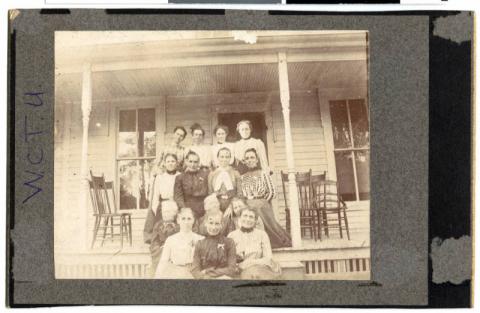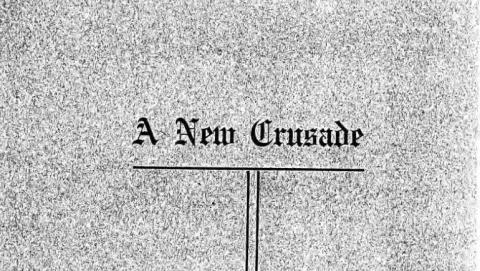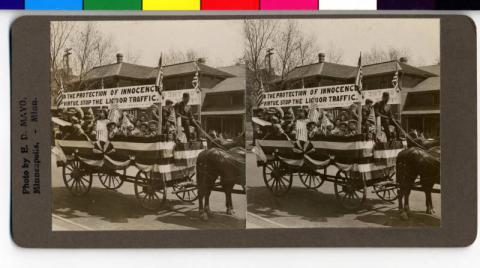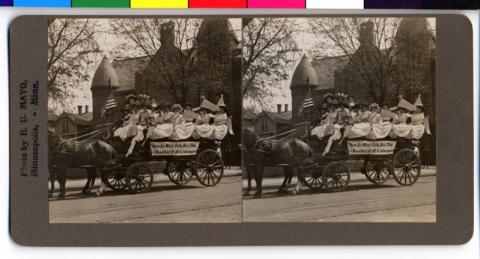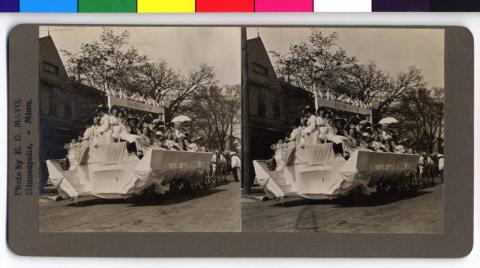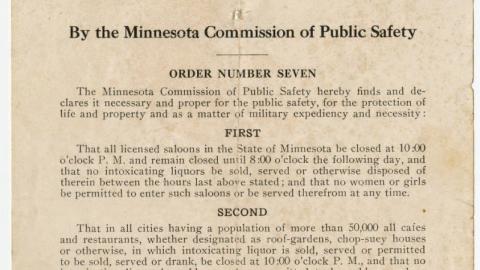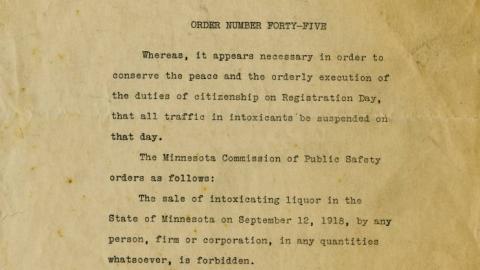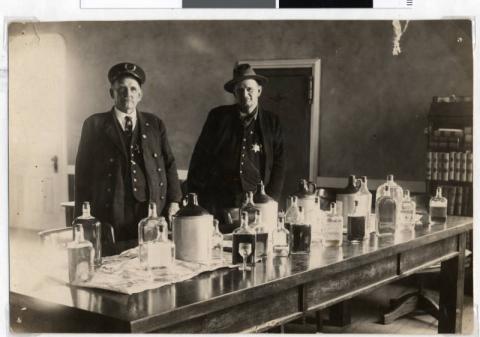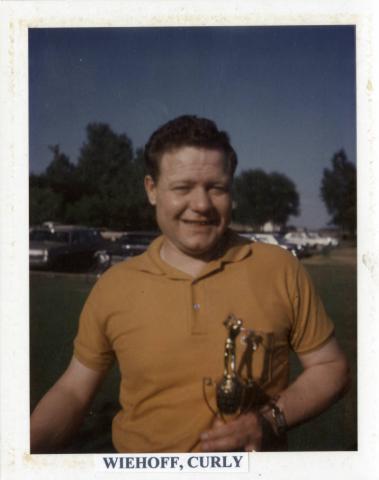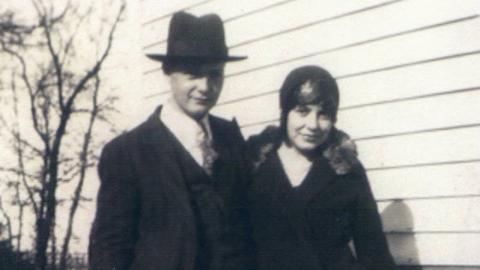Primary Source Set
by Jennifer Hootman, Digital Arts, Sciences, & Humanities (DASH) Program Associate, University of Minnesota Libraries - Twin Cities
Politics and Government Social Issues
Following the American Revolutionary War (1775-1783), alcohol-related problems were abundant and on the rise, and people throughout the new nation were looking for explanations and solutions. One solution, referred to as temperance, began to pick up momentum in the late 18th and early 19th centuries. In the early days of the temperance movement the solution to alcohol-related problems was thought to be moderation in drinking rather than abstinence. The temperance movement grew throughout the country establishing temperance societies and publishing journals. And as the movement grew the philosophy behind it began to change from moderation to banning the drinking of alcohol (prohibition) altogether in order to prevent alcoholism.
Many of these societies, such as the Anti-Saloon League, saw their cause as a matter of morality and religion. After the American Civil War (1861-1865), the Woman’s Christian Temperance Union (WCTU) formed and grew alongside the suffrage movement. Many former abolitionists found themselves participating in the WCTU. The fight for prohibition culminated in 1919 with ratification of the 18th Amendment and the passage of the Volstead Act to enforce it. Prohibition was not repealed until 1933 with the 21st Amendment. Though, Prohibition was repealed on a federal level, many states opted for a local decision among residents to vote for or against local Prohibition. In 1966 the last state to repeal local Prohibition was Mississippi.
Source: "Temperance and Prohibition." Gale Encyclopedia of U.S. History: Government and Politics. Detroit: Gale, 2009. Student Resources in Context. Web. 8 Apr. 2016.
Discussion Questions & Activities
When you look at these images, documents, and transcripts in MDL, be sure to use the zoom-in tool to view subtle details in the images and enlarge the text for easier reading.
- In Right Reverend Bishop John Ireland's lecture, Intemperance and Law, to what did he attribute to the cause of poverty, idleness, crime, homelessness, and destruction of the family?
- In Right Reverend Bishop John Ireland's lecture, Intemperance and Law, what liquor laws did saloon owners constantly defy?
- In the lecture, Intemperance and Law, how did Right Reverend Bishop John Ireland describe the political power of saloons?
- According to Right Reverend Bishop John Ireland in his lecture, Intemperance and Law, in what ways should American citizens promote and protect the welfare of the state from the powerful saloons and liquor-traffic?
- At the end of the the printed lecture, Intemperance and Law, by Right Reverend Bishop John Ireland, is a printed insert of an address by Cardinal Manning. According to Manning, in what ways could women oppose intemperance?
- In the image, Women's Christian Temperance Union Temple in Windom, Minnesota what does the building tell us about their impact and influence?
- In the image, Women's Christian Temperance Union members in Blue Earth, Minnesota, what does the visible range in age and race tell us about the women participating in the WCTU?
- Who was the author of the paper, A New Crusade: Suggestions for More Effective Temperance Work Among the Young?
- When and to what audience was the paper, A New Crusade: Suggestions for More Effective Temperance Work Among the Young, read?
- According to the author of the paper, A New Crusade: Suggestions for More Effective Temperance Work Among the Young, what was the main cause that made the Catholic total abstinence work ineffective?
- What plan or ideas did the author of the paper, A New Crusade: Suggestions for More Effective Temperance Work Among the Young, recommend as a means by which to renew and reinvigorate the Catholic total abstinence work? And how did he envision these ideas would make a more lasting impact on future generations?
- Looking closely at the three Temperance Parade images, what are the messages on the banners? Who do you see sitting in these wagons and what was their significance?
- Considering the Temperance Parade and Women's Christian Temperance Union images, why were so many participants women? And what did this say about the changing role of women in American society?
- According to the description in MDL, what do the Northfield police officers have displayed on the table? And what are the most common types of bottles represented on the table?
- From reading the transcripts or listening to the two oral interviews of Ralph Wiehoff and Harold Servatius, why were the pint-sized bottles so popular? And why is some of the liquor on that table clear and some colored?
- What specific liquor laws were implemented and enforced in Order Number Seven from the Minnesota Commission of Public Safety? What social problems were these laws meant to address?
- Order Number Forty-Five from the Minnesota Commission of Public Safety refers to a suspension in "all traffic of intoxicants" on September 12, 1918. What was the significance of that date?
- In Oral history interview with Ralph Wiehoff, how did his father, Charles Wiehoff, and older brother, Ed, hide pints of moonshine during Prohibition?
- In Oral history interview with Ralph Wiehoff, how did his father, Charles Wiehoff, get rid of any evidence of liquor when he was raided by the FBI? And what kind of charges could he have faced if evidence was found?
- In Oral history interview with Ralph Wiehoff, what was a "stool pigeon?
- In Oral history interview with Ralph Wiehoff, how did his brother, Ed, escape a charge of possession of liquor?
- In Oral history interview with Harold Servatius, how did Leo Lemm hide or disguise the liquor he sold? What did the FBI find and how did they find it? How did Leo Lemm get his charge reduced, and how did Harold Servatius help?
- Lesson Plan: The Hyper-Partisan Politics of Prohibition - Lesson Plan (PBS, For Educators: Prohibition in the Classroom
- Lesson Plan: Immigration and Prohibition - Lesson Plan (PBS, For Educators: Prohibition in the Classroom)
- Lesson Plan: The Roots of Prohibition: Examining the Effort to Prohibit Alcohol in America - Lesson Plan (PBS, For Educators: Prohibition in the Classroom)
- Lesson Plan: “Whispering Wires”: Public Law vs. Individual Civil Liberties - Lesson Plan (PBS, For Educators: Prohibition in the Classroom)
- Lesson Plan: Snapshot Activities (PBS, For Educators: Prohibition in the Classroom)
eLibrary Minnesota Resources (for Minnesota residents)
"Eighteenth Amendment (1919)." Gale Encyclopedia of U.S. Economic History. Ed. Thomas Riggs. 2nd ed. Vol. 1. Farmington Hills, MI: Gale, 2015. 369-370. Student Resources in Context. Web. 8 Apr. 2016.
"Prohibition." Britannica School. Encyclopædia Britannica, Inc., 2016. Web. 8 Apr. 2016.
"Prohibition." Student Resources In Context. Gale, Web. 8 Apr. 2016.
"Repeal of Prohibition, 1930-1933." DISCovering U.S. History. Detroit: Gale, 2003. Student Resources in Context. Web. 8 Apr. 2016.
Stanley, Edith Kirkendall. "Woman's Christian Temperance Union." Dictionary of American History. Ed. Stanley I. Kutler. 3rd ed. Vol. 8. New York: Charles Scribner's Sons, 2003. 496-497. Student Resources in Context. Web. 8 Apr. 2016.
"Temperance and Prohibition." Gale Encyclopedia of U.S. History: Government and Politics. Detroit: Gale, 2009. Student Resources in Context. Web. 8 Apr. 2016.
Additional Resources for Research
Alcohol, Temperance & Prohibition, Brown University Library, Center for Digital Scholarship, n.d. Web. 8 Apr. 2016.
Causes: The Woman's Christian Temperance Union, National Women's History Museum, 2007. Web. 8 Apr. 2016.
How Teachers can make the most of Prohibition, National Endowment for the Humanities, n.d. Web. 8 Apr. 2016.
Indomitable Spirits: Prohibition in the United States, Kentucky Digital Library, Digital Public Library of America, Apr. 2013. Web. 8 Apr. 2016.
Progressive Era to New Era, 1900-1929 - Prohibition: A Case Study of Progressive Reform, Library of Congress, n.d. Web. 8 Apr. 2016.
Prohibition: A Film by Ken Burns and Lynn Novick, Public Broadcasting Service, 2011. Web. 8 Apr. 2016.
Teaching With Documents: The Volstead Act and Related Prohibition Documents, The U.S. National Archives and Records Administration, n.d. Web. 8 Apr. 2016.
Topics in Chronicling America - Prohibition, Library of Congress, Serial & Government Publications Division, 23 Jul. 2013. Web. 8 Apr. 2016.
Weinhardt, Beth. Anti-Saloon League Museum, Westerville Public Library, n.d. Web. 8 Apr. 2016.
Published onLast Updated on
